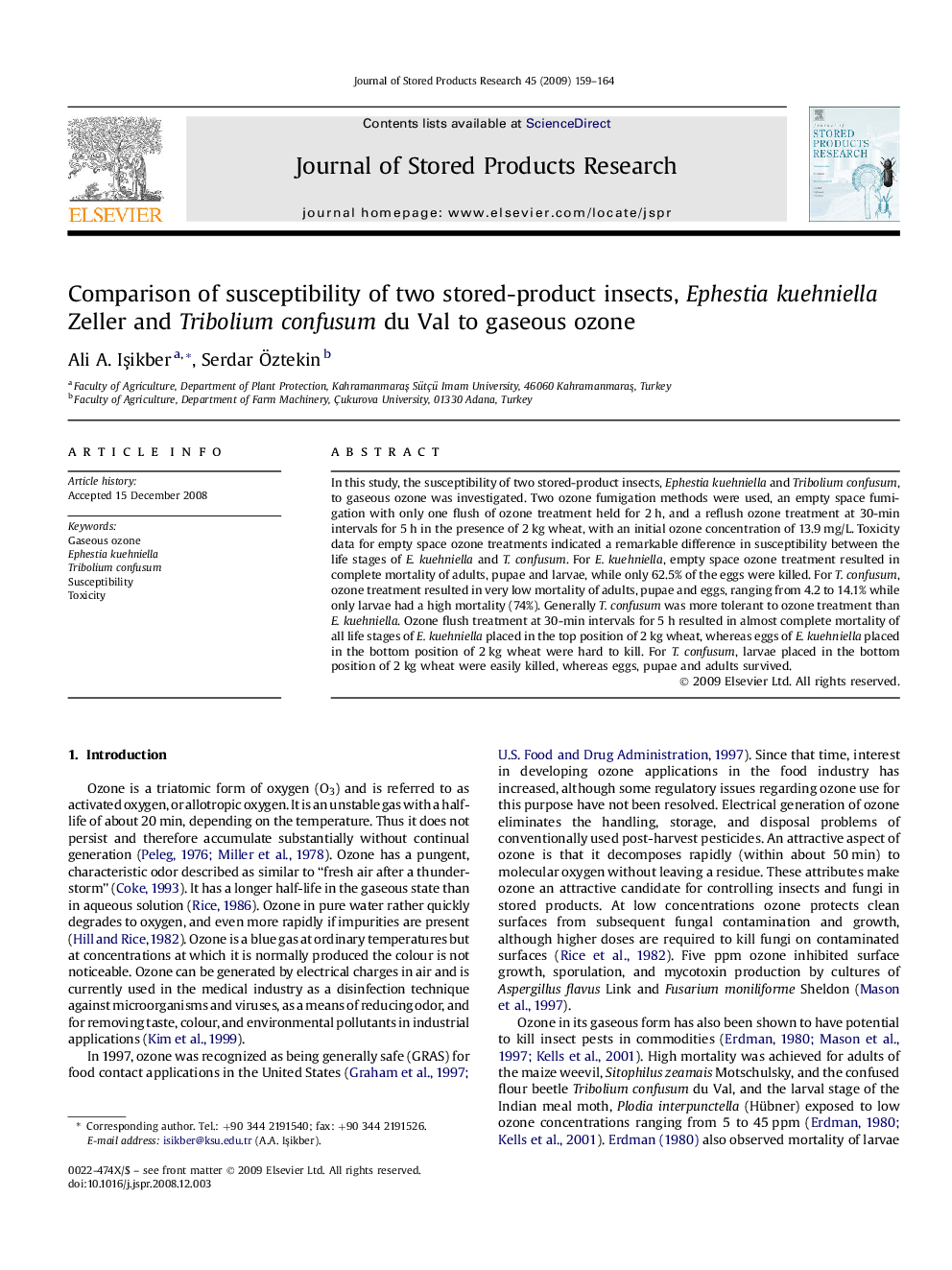| Article ID | Journal | Published Year | Pages | File Type |
|---|---|---|---|---|
| 4517368 | Journal of Stored Products Research | 2009 | 6 Pages |
Abstract
In this study, the susceptibility of two stored-product insects, Ephestia kuehniella and Tribolium confusum, to gaseous ozone was investigated. Two ozone fumigation methods were used, an empty space fumigation with only one flush of ozone treatment held for 2Â h, and a reflush ozone treatment at 30-min intervals for 5Â h in the presence of 2Â kg wheat, with an initial ozone concentration of 13.9Â mg/L. Toxicity data for empty space ozone treatments indicated a remarkable difference in susceptibility between the life stages of E. kuehniella and T. confusum. For E. kuehniella, empty space ozone treatment resulted in complete mortality of adults, pupae and larvae, while only 62.5% of the eggs were killed. For T. confusum, ozone treatment resulted in very low mortality of adults, pupae and eggs, ranging from 4.2 to 14.1% while only larvae had a high mortality (74%). Generally T. confusum was more tolerant to ozone treatment than E. kuehniella. Ozone flush treatment at 30-min intervals for 5Â h resulted in almost complete mortality of all life stages of E. kuehniella placed in the top position of 2Â kg wheat, whereas eggs of E. kuehniella placed in the bottom position of 2Â kg wheat were hard to kill. For T. confusum, larvae placed in the bottom position of 2Â kg wheat were easily killed, whereas eggs, pupae and adults survived.
Related Topics
Life Sciences
Agricultural and Biological Sciences
Agronomy and Crop Science
Authors
Ali A. IÅikber, Serdar Ãztekin,
